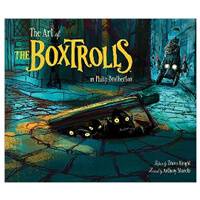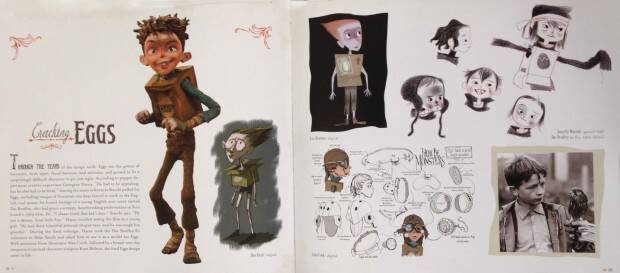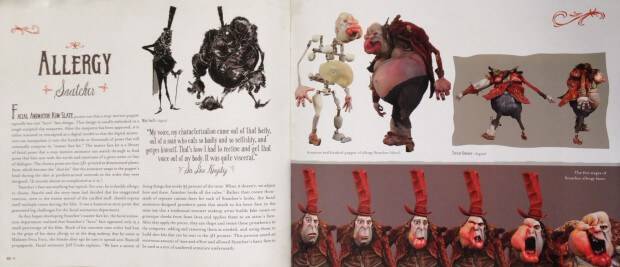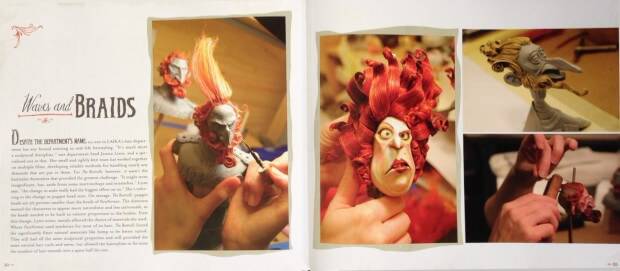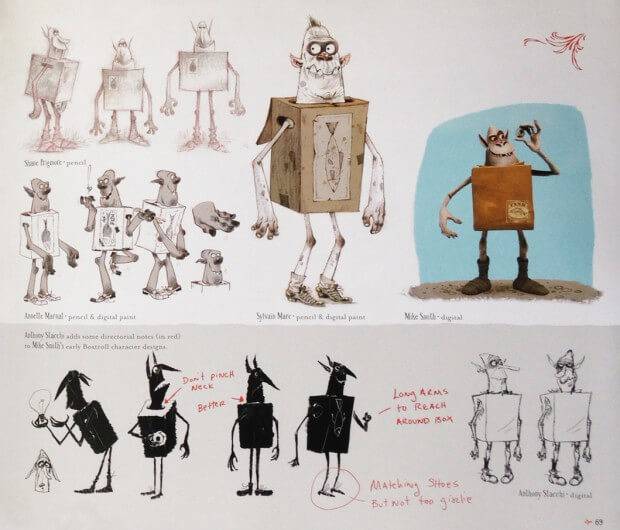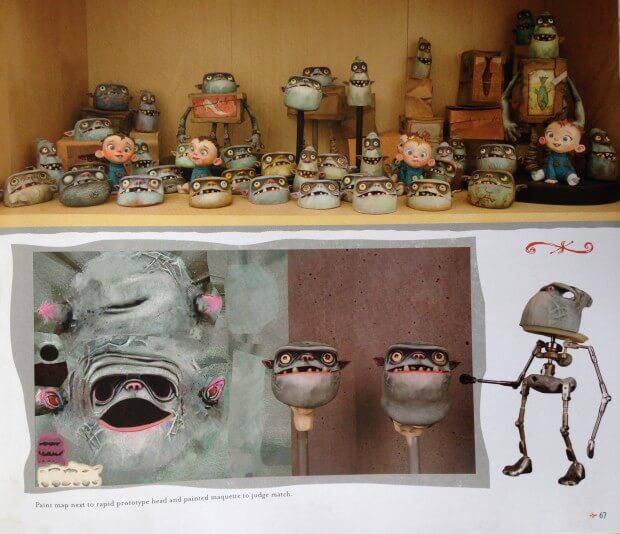‘The Art of The Boxtrolls’ – Book Review
The Art of The Boxtrolls
Phil Brotherton
Abrams & Chronicle Books
After the launch of Laika’s third feature film the animation community seemed alight with the beauty and splendor of their most recent stop-motion world. The Art of Boxtrolls by Philip Brotherton is the perfect accompaniment to this Fall’s must-see animated adventure. Since the film’s announcement in early 2013, shortly after the release of their last film ParaNorman, regularly tracking updates on the production of the feature has been part of our day-to-day lives. The brilliant character design and production development of their last film left much of the animation community wondering how could they possibly improve in terms of style and technique in the The Boxtrolls (to read more about the film itself check out Skwigly’s review here).
Laika’s The Art of ParaNorman stands out as one of the finest ‘Art of…’ books out there, thoughtfully set out and thoroughly detailing all areas of the production, exactly as you’d expect from a high class and altogether impressive company. However Coraline: A Visual Companion came at the end of the last generation of not-quite-perfect film books, lacking a little of the finesse in terms of layout and image quality. However since their move to Chronicle books every image is crisp and the layout is clean, easy to digest visually and packed full of all those delicious things that make an animated film just that little bit more special.
The systematic structure of this book is another area that deserves some congratulating. Covering the process in a more narrative manner covering the process within four chapters that look into the four distinct classes of Cheeseburg, The Streets (of the town folks) , The world below (the boxtrolls home) , Santcher realm, ( the power hungry villain of the film) and Life on Top (covering the upper world elite of cheese gobbling snobs) this is very interesting and all together appropriate approach to sectioning up this book. Originally based on the Alan Snow’s ‘Here be monsters’ the originally characterisation of Snatcher being more destructive and poisonous personality (if you can believe it!) from the original story ‘Here be monsters’ he is quoted as saying ‘remove their government, destroy there banks, smash their factory’s and clobber them what done is down!” a very angry and aggressive character. The films character remains true to this idea of snatcher but lightens him slightly and rather than wanting to destroy the ‘upper classes’ he wants to join them as a kind of dark and unhinged under dog.
The book covers a lot to do with the style and overall tone of the film in its various states – both above and below ground – with plenty of sketches, built up backgrounds and character designs. It provides a real sense of the work that went into making this hodgepodge of 20th century fashions and styles which come together into one dense and highly decorative universe. It covers the process of designing, animating and construction before going into finer details about some of the smaller, perhaps more overlooked areas of the film; Costume design, for instance, is a major department in a film like this and the volume and budget given over to creating the hundreds of miniature outfits is always flabbergasting. The theme of The Boxtrolls is texture, however, and plenty of it. Costume designer Deborah Cook says:
The investment in texture has been way more than any other film. We’ve been allowed to have free rein and make them as luxuries as we can.
The finding and crafting of miniature material is often overlooked by a general audience, but creating a garment that is not just beautiful, strong and seemingly effortless but also to the scale of a miniature world is a hard process, brilliantly achieved in both this book and the film itself. Another interesting subsection in the book is the colour theory behind the film, an area of personal interest to many and always nice to see mentioned amongst the hierarchy of a film. Colour attributes specifically relate to the class system, making sure to lead the audience’s eyes to the most integral characters, a system also put into place with the conical shape of the city itself; The higher and more important sets given a more saturated appearance, with run-down old factories in dingy, sepia tones.
Another interest to the keen-eyed and technically-minded reader would be how they developed such incredibly complicated armatures for the trolls – the answer being with much difficulty. As Nick Smally-Ramsdale (what a brilliant name!) discusses in the book when creating the armature for Fish, a serious of swivel joints, remarkable feats of ingenuity, the help with RP team and twelve years of armature building experience all come together to create what are fundamentally retractable puppets! Creating these compact creature who, at a moment’s notice have to fold their rather chunky and elongated arms, legs and heads into cardboard boxes, may seem simple but was most definitely not.
The technology and work that has gone into the film’s more expressive and bold approach to digital painting is incredible, based on early 20th Century Art and expressionist panting gave the film a darker, more Victorian feel overall, as well as touching upon more disturbing and grotesque colour palettes, as used in the scenes involving the villainous Snatcher’s allergy flare-ups.
Overall this is a great book, organised in a clear and interesting way to lead you though all areas of production, without dumbing it down or going over previous content, something most readers of the book can appreciate. The only real negative is a slight lack of models, puppet turnaround and set-building photos. Given the sheer volume of production on this film it almost seems a shame to not have more of a spotlight on the amazing detail that has gone into the minutiae of the film. Altogether this is a must-have book for all fans of the film and for everyone attempting to understand the progression of stop-motion technology. To revel in the film’s beauty, pick over the ideas and the volume of work that went into this theatrical masterpiece there is nothing better… and with Christmas just round the corner there’s no reason everyone can’t have this brilliant book in their collection.
Items mentioned in this article:
